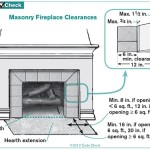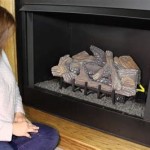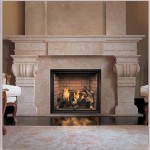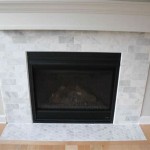DIY Outdoor Stone Fireplace: A Comprehensive Guide
An outdoor stone fireplace is a significant addition to any outdoor living space, offering warmth, ambiance, and a focal point for gatherings. Constructing one's own stone fireplace can be a rewarding project, allowing customization and cost savings. However, it requires careful planning, proper execution, and adherence to safety regulations.
This article provides a detailed guide to building an outdoor stone fireplace, covering essential considerations, step-by-step instructions, and safety measures. It aims to equip the reader with the knowledge necessary to undertake this project successfully while ensuring the durability and safety of the structure.
Planning and Preparation: The Foundation for Success
Before commencing any construction, meticulous planning is crucial. This phase involves several key steps, including site selection, design considerations, material selection, and obtaining necessary permits.
Site Selection: The location of the fireplace should be carefully considered. Factors to evaluate include proximity to the house, prevailing wind direction, local ordinances, and potential fire hazards. The fireplace should be situated away from flammable materials like trees, fences, and overhanging branches. Ensure adequate clearance from structures and consider the potential impact on neighboring properties. Check local building codes and homeowner association regulations to determine any restrictions on outdoor fireplace construction.
Design Considerations: The design of the fireplace should complement the existing landscaping and architectural style of the house. Determine the desired size, shape, and overall aesthetic. Consider features such as a cooking grate, storage space for firewood, or a built-in seating area. Sketch out detailed plans or utilize online design tools to visualize the final product. Pay attention to the firebox dimensions, chimney height, and overall proportions for optimal functionality and aesthetic appeal. A well-designed fireplace not only enhances the outdoor space but also ensures efficient smoke ventilation.
Material Selection: Choosing the right materials is essential for the durability, safety, and aesthetic appeal of the fireplace. Natural stone, such as flagstone, limestone, or river rock, is a popular choice for its natural beauty and durability. Concrete blocks can be used for the inner firebox construction, providing a cost-effective and fire-resistant base. Firebricks are crucial for lining the firebox, protecting the surrounding structure from intense heat. Mortar specifically designed for high-temperature applications is necessary to bind the stones and bricks together. Other materials to consider include a metal firebox insert, chimney liner, and decorative elements such as capstones or mantels. Selecting high-quality materials ensures the longevity and safety of the fireplace.
Obtaining Permits: Before starting construction, it is essential to obtain the necessary permits from local building authorities. Permit requirements vary depending on the locality and the scope of the project. Contact the local building department to inquire about specific regulations and application procedures. Failure to obtain the required permits can result in fines, project delays, or even demolition orders. The permit process ensures that the construction adheres to safety standards and complies with local building codes.
Construction Process: A Step-by-Step Guide
The construction of an outdoor stone fireplace involves several stages, each requiring precision and attention to detail. These stages include foundation preparation, firebox construction, stone veneer application, and chimney construction.
Foundation Preparation: A solid foundation is critical for the stability and longevity of the fireplace. Begin by excavating the area to the required depth, typically below the frost line to prevent shifting due to freezing and thawing. Pour a concrete footing, ensuring it is level and properly reinforced with rebar. Allow the concrete to cure completely before proceeding with the next stage. The dimensions of the footing should be slightly larger than the base of the fireplace to provide adequate support. A well-prepared foundation prevents settling and cracking over time.
Firebox Construction: The firebox is the heart of the fireplace, where the fire burns. Construct the firebox using concrete blocks, ensuring they are level and securely cemented together. Line the interior of the firebox with firebricks, using refractory mortar to withstand the high temperatures. The firebricks should be arranged in a tight, interlocked pattern to provide maximum protection. Consider incorporating a metal firebox insert for increased efficiency and ease of cleaning. The size and shape of the firebox should be consistent with the design plans and allow for adequate airflow.
Stone Veneer Application: Applying the stone veneer is where the fireplace takes on its aesthetic appeal. Begin by applying a scratch coat of mortar to the concrete block or firebrick surface. This provides a bonding surface for the stones. Select the stones based on their size, shape, and color, and arrange them in a visually appealing pattern. Apply mortar to the back of each stone and press it firmly onto the scratch coat. Ensure the stones are level and properly aligned. Use shims to maintain consistent spacing between the stones. As the mortar sets, remove any excess and tool the joints for a clean, professional finish. The stone veneer not only enhances the appearance of the fireplace but also provides an additional layer of insulation.
Chimney Construction: The chimney is essential for venting smoke and ensuring proper draft. Construct the chimney using concrete blocks or stones, ensuring it is properly aligned and mortared together. Install a chimney liner to protect the chimney walls from heat and corrosive gases. The height of the chimney should be sufficient to clear the roofline and surrounding obstructions, typically at least two feet above the highest point within ten feet. Consider adding a chimney cap to prevent rain, snow, and debris from entering the chimney. A properly constructed chimney is crucial for safe and efficient fireplace operation.
Safety Considerations: Ensuring a Safe and Functional Fireplace
Safety is paramount when constructing and using an outdoor stone fireplace. Adhering to safety guidelines and best practices minimizes the risk of accidents and ensures the safe operation of the fireplace.
Fire Safety: Maintain a safe distance between the fireplace and any flammable materials. Keep a fire extinguisher and a water hose nearby in case of emergencies. Never leave a fire unattended and ensure it is completely extinguished before leaving the area. Teach children about fire safety and keep them away from the fireplace when it is in use. Regularly inspect the fireplace for cracks or damage and repair them promptly. Proper fire safety practices prevent accidental fires and ensure the safety of people and property.
Structural Integrity: Ensure the fireplace is structurally sound and able to withstand the elements. Use high-quality materials and proper construction techniques. Regularly inspect the foundation, firebox, and chimney for signs of deterioration. Repair any cracks or damage promptly to prevent structural failure. Avoid overloading the fireplace with excessive weight. A structurally sound fireplace is essential for long-term durability and safety.
Proper Ventilation: Ensure adequate ventilation to prevent the buildup of carbon monoxide. The chimney should be properly sized and constructed to provide sufficient draft. Avoid using the fireplace in enclosed or poorly ventilated areas. Install a carbon monoxide detector in nearby structures to provide early warning of any potential hazards. Proper ventilation is crucial for preventing carbon monoxide poisoning and ensuring safe fireplace operation.
Material Handling: When handling heavy stones and materials, wear appropriate safety gear, including gloves, eye protection, and a hard hat. Use proper lifting techniques to avoid back injuries. Ensure the work area is clear of obstructions and potential tripping hazards. Store materials safely and securely to prevent accidents. Safe material handling practices minimize the risk of injuries during the construction process.
In addition to these key points, consider the following:
Mortar Mixing: Always follow the mortar manufacturer's instructions carefully. Mix the mortar to the correct consistency, ensuring it is not too dry or too wet. Use a mortar mixer or a mixing trough to ensure a consistent mix. Improperly mixed mortar can result in weak bonds and structural instability.
Stone Cutting: When cutting stones to size, use appropriate tools and safety equipment, such as a masonry saw and safety glasses. Ensure the stones are properly supported during cutting to prevent breakage. Avoid cutting stones in windy conditions to minimize dust exposure. Accurate stone cutting is essential for achieving a professional-looking finish.
Water Drainage: Ensure the fireplace is designed to allow for proper water drainage. Incorporate a weep hole in the firebox to prevent water from accumulating. Slope the surrounding area away from the fireplace to prevent water from pooling. Proper water drainage prevents water damage and prolongs the lifespan of the fireplace.
Local Regulations: Always comply with local building codes and regulations. Obtain the necessary permits and inspections before starting construction. Follow all safety guidelines and best practices. Failure to comply with local regulations can result in fines, project delays, or even demolition orders.
Professional Assistance: If you are unsure about any aspect of the construction process, seek professional assistance from a qualified contractor or mason. A professional can provide expert advice, design assistance, and construction services. While DIY construction can save money, it is essential to prioritize safety and quality.
Constructing an outdoor stone fireplace is a significant undertaking that requires careful planning, proper execution, and adherence to safety regulations. By following the steps outlined in this guide and prioritizing safety, one can create a beautiful and functional outdoor fireplace that will provide years of enjoyment.

How To Build An Outdoor Stacked Stone Fireplace

Your Diy Outdoor Fireplace Headquarters Plans And Kits By Backyard Flare Llc Tucson Arizona

How To Build Outdoor Fireplace Hallstrom Home

22 Cozy Diy Outdoor Fireplaces Fire Pit And Fireplace Ideas

Stonetutorials Living Stone Masonry

How To Build An Outdoor Fireplace Today S Creative Life

Diy Outdoor Fireplace Kit Fremont Makes Hardscaping And Easy

How To Build An Outdoor Fireplace Step By Guide Buildwithroman

How To Build Outdoor Fireplace Hallstrom Home
:max_bytes(150000):strip_icc()/livingstonemasonary-154847150f2a49558b21b5a93d08dfc9.jpg?strip=all)
10 Free Outdoor Fireplace Construction Plans
Related Posts








